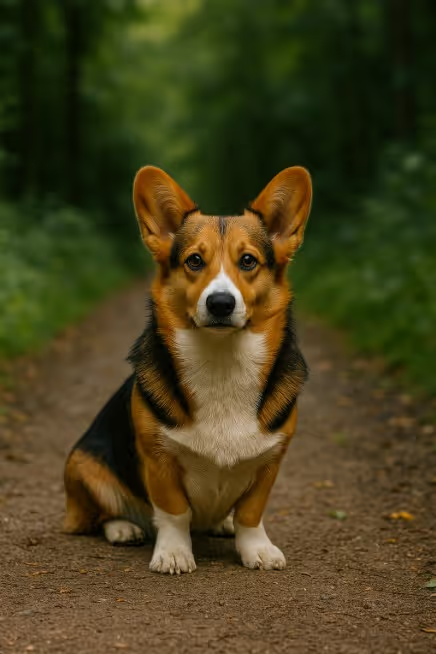The Cardigan Welsh Corgi (“Cardi”) is the original, long-tailed Welsh herder—smart, sturdy, and wonderfully devoted. Built low and long for heel-nipping cattle work, Cardigans are cheerful problem-solvers who love training games, hikes, and couch time with their people. If you’re wondering “Are Cardigan Welsh Corgis good apartment dogs?”—yes, for active owners who meet exercise and bark-management needs. “Do Cardigan Welsh Corgis shed?”—yes: they’re seasonal heavy shedders with a weatherproof double coat.

The Cardigan Welsh Corgi descends from ancient Celtic herding dogs brought to southwest Wales over 1,000 years ago. On small Welsh farms, Cardigans drove cattle to market, guarded homesteads, and controlled vermin. The Cardigan (with a full tail) and Pembroke (usually shorter tail) developed separately and were officially distinguished in the 20th century. Today, Cardigans are beloved companions and sport dogs (obedience, rally, agility, herding, scent work) prized for their humor and heart.
A small, long and low herder with a broad chest, full tail, and large ears.
Low trimming, regular de-shedding—especially during coat blows.
An energetic worker that thrives on brain + body work.
Clever, biddable, and a touch opinionated—keep it upbeat and structured.
Keep them lean to protect joints and the long back.
Generally robust, but the long back and herding build need thoughtful care.
Prioritize health testing, sound temperament, and lifelong support—or consider rescue.
Are Cardigan Welsh Corgis good apartment dogs?
Yes—if you provide 60–75 minutes of daily exercise, enrichment, and bark management.
Do Cardigan Welsh Corgis shed a lot?
Yes. Moderate normally and heavy seasonally; line-brush and de-shed tools help.
Are Cardigan Welsh Corgis hypoallergenic?
No. They are not hypoallergenic.
Cardigan vs Pembroke—what’s the difference?
Cardigan: full tail, larger bone, wider variety of colours (incl. blue merle). Pembroke: typically shorter tail, slightly lighter build. Temperaments overlap; meet breeders’ dogs.
How much exercise does a Cardigan need?
Plan for 60–75 minutes daily plus brain work (tricks, nose games, rally/obedience).
Do Cardigans bark a lot?
They’re alert watchdogs. Teach a reliable “quiet” and manage window/door triggers.
How do I protect a Cardigan’s back?
Keep them lean, use ramps, limit jumping/stairs, and strengthen core with controlled exercises.
Are Cardigans good with kids and other pets?
Generally excellent family dogs with early socialization; redirect herding nips into toys and supervise play.
What health tests should breeders do?
Hips (± elbows), CAER eyes, and PRA rcd3/DM DNA where relevant; ask for documentation.